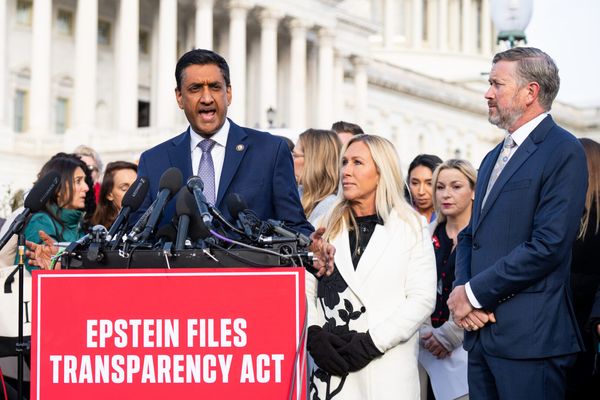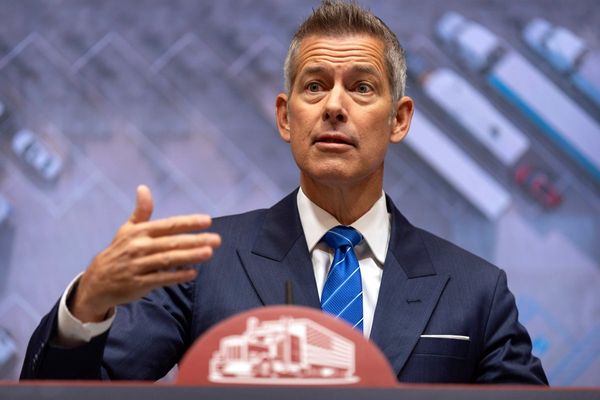
The scale of the Australian government’s climate action ambition for the next decade is expected to be set on Thursday with the anticipated release of its 2035 emissions reduction target.
Cutting emissions
The target was initially promised by February, but postponed until after the May election while the government waited on advice from the Climate Change Authority, a government agency chaired by former NSW Liberal treasurer Matt Kean.
The government is expected to announce the target at the same time it releases a barrage of reports, including the Climate Change Authority’s target advice, a plan to reach net zero by 2050 and an analysis of what can be done to cut pollution in six sectors of the economy, including electricity and energy, transport, industry, agriculture and land, resources and the built environment.
New policies to cut greenhouse gas emissions are expected to be announced alongside the new goal, which would build on the government’s 2030 target of a 43% reduction below 2005 levels.
Views differ on whether the government is on track to meet that goal, but the projections released in November suggest the country is headed for a 42.6% cut – just shy of the legislated target.
Setting targets
The 2035 target matters not just in Australia, but internationally. It will be submitted to the UN as part of the country’s “nationally determined contribution”, or NDC – what the government says it can do to help the world meet goals in the 2015 Paris agreement. The climate change minister, Chris Bowen, has indicated Australia is likely to submit a range rather than a single number.
The Paris deal includes a commitment that the target must be more ambitious than the existing 2030 goal – there can be no backsliding – and reflect the country’s “highest possible ambition”. The Climate Change Authority released a consultation paper in April 2024 with its preliminary assessment, finding a cut of at least 65% and up to 75% “would be ambitious and could be achievable if additional action is taken by governments, business, investors and households”.
Since then, the authority has been consulting experts and interest groups and has undertaken modelling to refine its advice. Its board – including scientists and business figures – reached its final position last week and Bowen received the advice on Friday.
The authority is required to consider what the best scientific advice says Australia should be doing to keep alive the goal of trying to limit global heating to 1.5C since preindustrial times. It should also consider the international political and diplomatic landscape, the economics of what’s possible, the pace of technological development and what is considered socially deliverable.
From a scientific view, analyses have found Australia should make a percentage cut of somewhere between the high 70s and 100% – actually reaching net zero – by 2035. Australia’s Pacific island neighbours have also stressed the need for their more developed friend to be as ambitious as possible – and to stop approving new fossil fuel developments.
Some of these analyses – including by the thinktank Climate Analytics and the Australian Conservation Foundation – have detailed estimates of how cuts could be made to meet a target of at least 75%. Climate campaigners generally believe the target range must include 75% to be credible.
But other experts, such as Frank Jotzo, the director of the Australian National University’s Centre for Climate and Energy Policy, have argued that even a target of 65% would be ambitious, given it would require pollution to be cut in half over the next decade and progress to date has been much slower. He said the introduction and implementation of policies to transform the economy was more important than the number.
Business organisations are politically influential and vary markedly in their positions. One group of about 500 that includes Fortescue, Atlassian, Ikea and Unilever has argued strongly for 75%. Others have emphasised the cost of action and pitched for a goal in the 50s.
The Business Council of Australia issued a veiled warning about setting a target in the 60s or 70s, publishing modelling suggesting between $395bn and $530bn of capital investment would be needed.
International action
The picture across developed countries is mixed. The US (a little more than 10% of global emissions) has abandoned the field on climate action.
The UK has a 2035 goal equivalent to a 78% cut when compared with 2005 levels, and the EU is expected to land in the high 60s or low 70s. But Japan, Canada and New Zealand have set much lower targets (equivalent to 59%, 45-50% and 51-55% below 2005 levels respectively).
As an emerging economy, China – the world’s biggest national polluter – has not yet set targets on the scale of those nations that developed earlier. Its current goal is that its pollution will peak by 2030.
Some analyses suggest that might have already happened as it builds extraordinary amounts of renewable energy and uses less coal power (even as it continues to build new plants). There is a focus before the Cop30 climate conference in Brazil in November on what Beijing will promise to do by 2035.
In an interview, Bowen pointed to a 2021 calculation by the Intergovernmental Panel on Climate Change that suggested global emissions needed to be cut by 60% between 2019 and 2035 to keep the 1.5C goal on the table. That translates to a 68% cut below 2005 levels – the baseline used by Australia.
Global heating has accelerated since that report was released and 68% is a planet-wide average, suggesting developed countries such as Australia would need to do more to be aligned with the 1.5C goal.
The climate risk
The problem that was trying to be addressed was spelt out in detail on Monday in the first national climate risk assessment, released by Bowen and developed by the Australian Climate Service.
It modelled the impact of climate-related hazards such as heatwaves, drought and floods on different parts of the community, economy and environment under three global heating scenarios: above 1.5C, above 2C and above 3C. Modelling found under the 1.5C scenario alone the annual direct cost could of floods, bushfires, storms and cyclones could reach $40bn by 2050.
The assessment found deaths from heatwaves – the deadliest form of extreme weather event – could rise significant under higher temperatures and sea level rise meant more than 1.5 million people could be living in areas at risk of coastal flooding in 2050.
Financial systems, supply chains, infrastructure, primary industries and national security could all face substantial disruption. On the natural environment, it reinforced that Australia was likely to lose ecosystems and species by the middle of the century and this could affect people’s access to clean air, water and food.
The prime minister, Anthony Albanese, said the findings would inform the 2035 target while also stressed the need to plan for an “orderly” transition to avoid losing public support for climate action.







